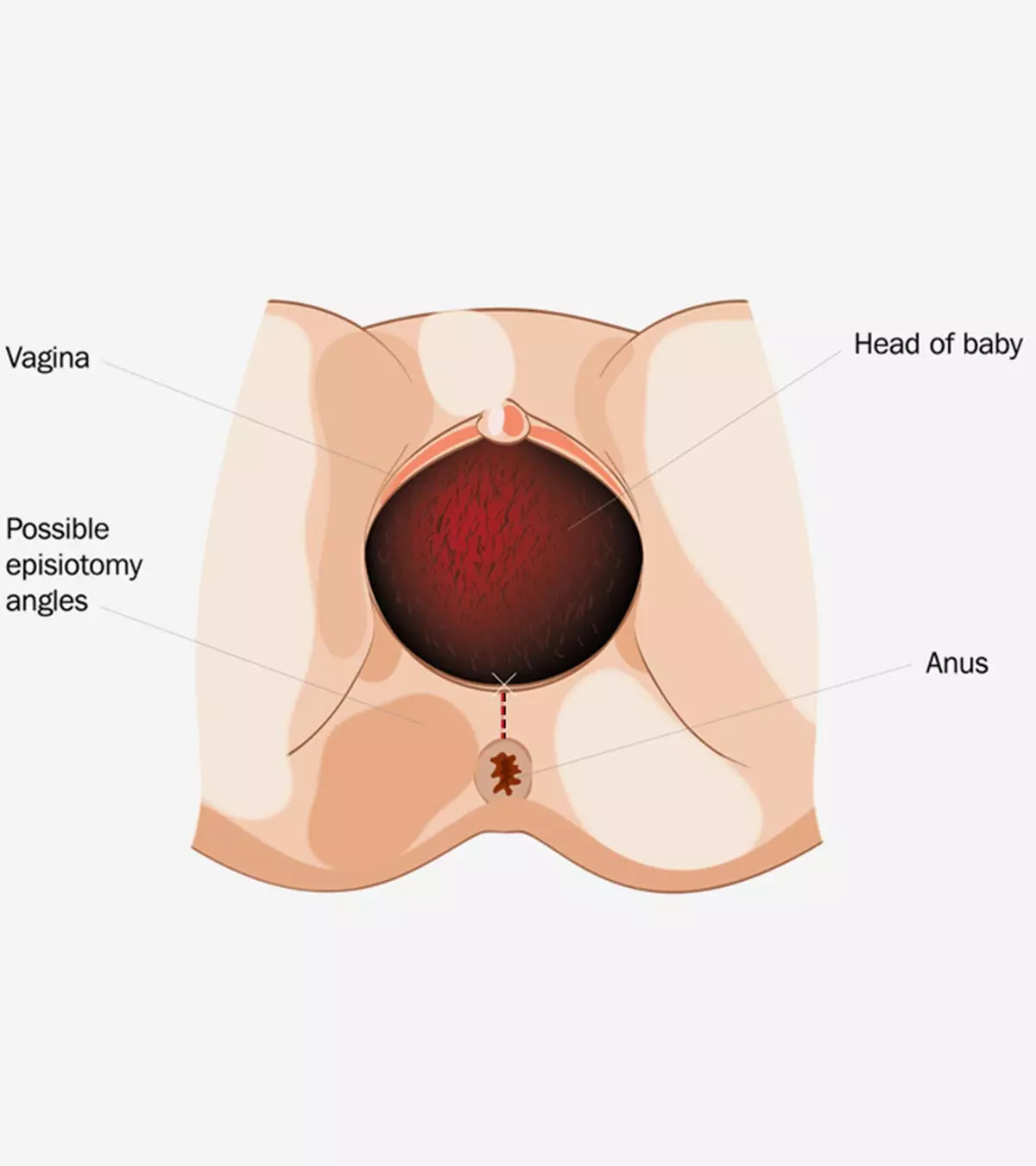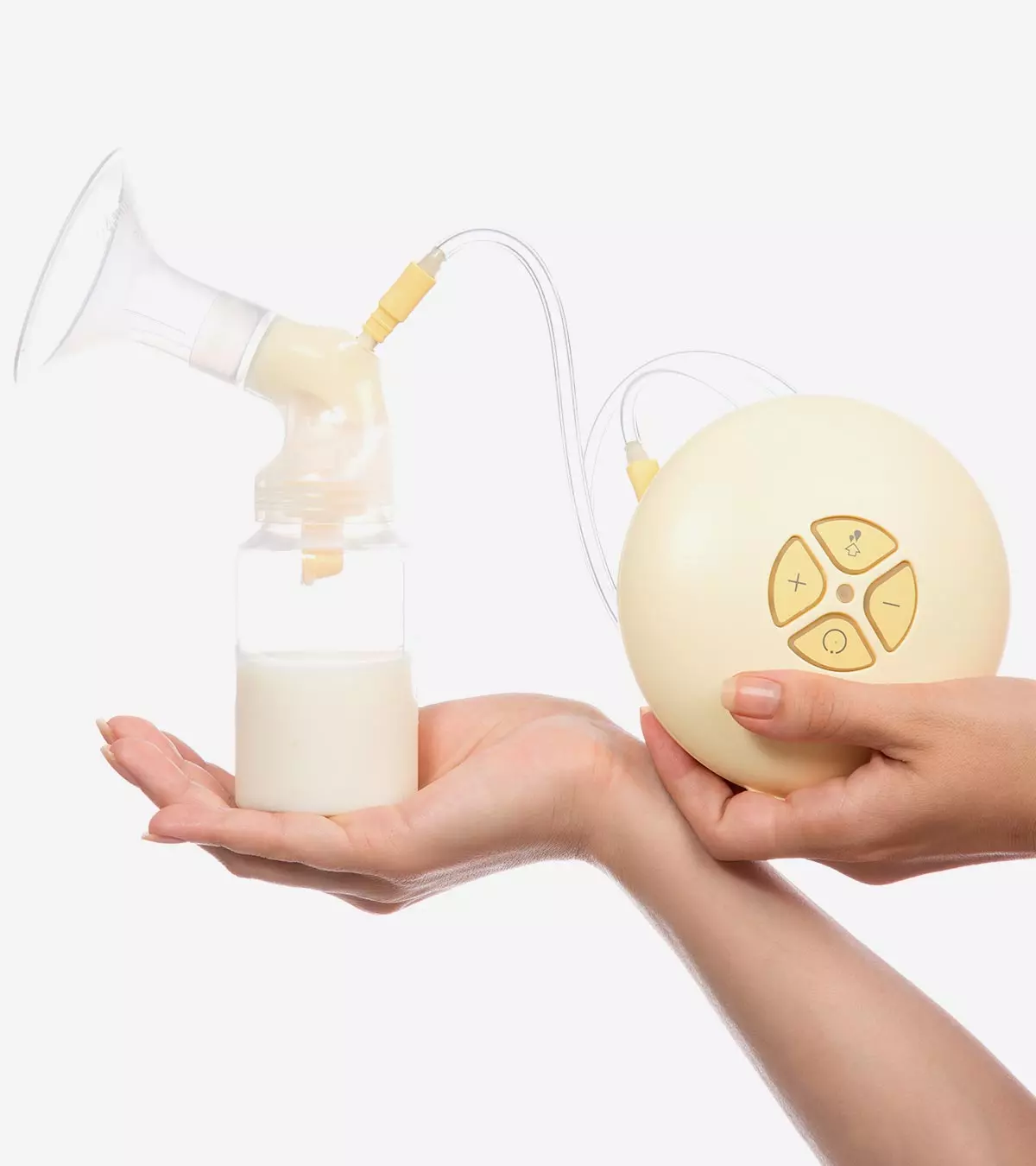

Image: Shutterstock
Childbirth is a remarkable journey and an unforgettable experience for first-time moms. However, this journey comes with some unfavorable elements, such as a perineal tear. Perineal tears may occur on the vaginal opening when the infant’s head is pushed through it during vaginal delivery.

Read on as we explain some vital details about the types of perineal tears, the risk of a severe tear, remedies and tips to help manage this kind of tear during the birth process, and how to overcome perineal tear pain.
What Is A Perineal Tear?
A perineal tear mostly occurs in women having their first vaginal delivery. The tear can be a small nick or a deep laceration. A perineal tear mostly happens when your baby’s head comes out through the vaginal opening. If your child has a large head, it will exert excess pressure on the vagina during delivery, and lead to possible perineal tears.
Tears that involve around your vaginal skin usually heal within a few weeks. But, when the vaginal tear seems to be more extensive, it takes longer to heal. When the pain tends to get excessive and unbearable every day, you need to contact the gynecologist immediately. Excess pain also signifies the onset of vaginal infection, which may require proper treatment.
Types Of Perineal Tear
According to the extent of tearing, Perineal tears are classified as:
1. First-Degree Perineal Tear:
- They are the mildest vaginal tears, and only involve the tearing of the skin around the vaginal opening or the perineal skin.
- You may experience a mild irritation or burning sensation while urinating.
- The first-degree tears usually heal within one week, and may not require any stitches.
- To overcome the pain during urination, you can take some lukewarm water in a squeezy bottle and pour it into on your vulva. The water soothes the irritation, and you can comfortably pass your urine for the first week after childbirth.
2. Second-Degree Perineal Tear:
- The tearing of the perineal muscles, which lies between your vagina and anus, imposes the second-degree vaginal tear. The perineal muscle usually supports our uterus and rectum.
- 2nd degree tears often require stitches and the damage heals within the first two to three weeks after childbirth.
- To overcome the pain of second-degree tear, you can follow some of the simple tips. You can try to sit on a pillow or a padded ring to provide additional support to your vagina.
- You can pour lukewarm water using a squeeze bottle over your vulva while passing your urine.
- After a bowel movement, try to clean your back portion softly, so that it does not rub against the wounded vaginal region.
- Apply ice pack to the wounded vaginal region, to overcome the severe pain and irritation. You can also place a chilled witch hazel pad in your sanitary napkin and wear it.
- Your doctor may prescribe you to intake stool softeners or pain relievers to soothe the unbearable pain of tears.
3. Third-Degree Perineal Tear:
- The tearing of the perineal muscles and the delicate muscle around your anus called the anal sphincter imposes 3rd degree tear.
- Such a perineal tear often gets treated in the operating room, and it may take months to heal.
- To overcome the severe pain, you can try to sit on a pillow or a padded ring after the delivery.
- You can pour lukewarm water on your vulva while urinating or place an ice pack on the wounded vaginal region.
4. Fourth-Degree Perineal Tear:
- It is the most severe form of vaginal tear that involves tearing of the perineal muscles, anal sphincter and the tissue lining of your rectum.
- 4th degree tear always gets treated in an operating room, and it may take several months to heal.
- Some of the common complications that can occur are painful intercourse and fecal incontinence.
- Your gynecologist may evaluate your condition at the postpartum checkup, and may refer you to visit a colorectal surgeon, urogynecologist, or some other medical specialists (1).
Risk Of A Third- Or Fourth-Degree Tear
Here are some of the common situations in which your likelihood to experience third or fourth-degree perineal tear increases:
- When you have your first vaginal delivery.
- When your baby is big.
- When you give birth to your baby lying in a posterior position.
- When you push your baby for a longer time.
- When you have an episiotomy or have had one in your previous delivery.
- When you undergo an assisted delivery that includes the usage of forceps.
Tips To Care For A Perineal Tear
When you undergo a perineal tear, the gynecologist often stitches up the vaginal tear and the stitch tends to heal gradually. But, it is important for you to follow certain postpartum perineal hygiene habits, to prevent infection, overcome the pain, and promote healing.
Here are some helpful tips that can keep your perineum healthy and germ-free:
- Always clean the vaginal area by squirting some lukewarm water on it during and after urinating.
- After you excrete, try to clean your back using gauze pads or paper wipes. Never rub the skin harshly, as it can increase the risk of infections.
- Change your sanitary pads after every four to six hours.
- Take enough rest and avoid touching the wounded perineal region, as it increases the likelihood of infections.
- Excess straining during excretion can complicate the situation. To regularize your bowel passage intake adequate amount of fluids and fiber-rich foods. Your doctor may also prescribe you a stool softener or mild laxative (2).
Overcoming Perineal Tear Pain
Here are some of the simple tips to help ease perineal tear pain:
- Try to hold an ice pack on your affected vaginal region, so that it eases the severe pain. You can also try to wear chilled witch hazel pads along with your sanitary napkin to ease the swelling.
- A warm sitz bath for two to three times a day or warm compress can minimize the pain.
- To avoid excess strain, try not to stand or sit for a long time, as it can elevate your perineal pain.
- You can practice few Kegel exercises and opt for a perineal massage, as it makes your perineal region supple and aids in quick recovery (3)
Frequently Asked Questions
1. How common is perineal tearing during birth?
Around 85% of women undergoing a vaginal birth may encounter some degree of perineal tear. Further, around 0.6–11% of vaginal deliveries may result in a third or fourth-degree tear (4).
2. Can a perineum tear reopen?
Stitches are often used to help heal perineum tears and rarely come undone. However, infection or pressure due to bleeding may result in the breakdown of the stitches (5).
3. Is an episiotomy better than tearing?
Episiotomy is the process of making an incision in the vagina to create more space for the baby to come out during childbirth. Doctors are attempting to limit the practice of episiotomy as it may result in worse tearing than what might occur during natural childbirth. Most naturally occurring vaginal tears are not very deep and may not even require stitches (6).
4. Can I take a bath with perineal stitches?
Yes, you can take a bath with perineal stitches, which may help prevent infection. Take a shower or bathe with warm water and carefully pat dry (7).
Perineal tears are quite common in vaginal delivery and mostly occur as first or second-degree perineal tears. However, factors such as a first vaginal delivery, the baby’s posterior position during birthing, long labor periods, a history of episiotomy, etc., increase your risk of having a third or four-degree perineal tear at childbirth. The vaginal tear is usually stitched up right after delivery by your gynecologist, but recovery can take longer. Cleaning the vaginal area with lukewarm water, avoiding touching the damaged perineal region, applying an ice pack to the affected vaginal region, taking a warm sitz bath, and doing kegel exercises are beneficial in healing the perineal tear.
References
- Ryan Goh et al.; 2018; Perineal tears – A review.
https://www1.racgp.org.au/ajgp/2018/january-february/perineal-tears-a-review - Perineal wound breakdown.
https://www.rcog.org.uk/for-the-public/perineal-tears-and-episiotomies-in-childbirth/perineal-wound-breakdown/ - Why episiotomy during labor can hurt more than help.
https://utswmed.org/medblog/episiotomy-perineum-tearing/ - Your body after the birth.
https://www.nhs.uk/pregnancy/labour-and-birth/after-the-birth/your-body/
Community Experiences
Join the conversation and become a part of our nurturing community! Share your stories, experiences, and insights to connect with fellow parents.
Read full bio of shreeja pillai













